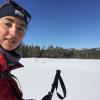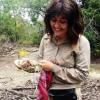Expert feedback wanted: Energy Harvesting
13 March 2025 12:40pm
Convocatoria BID 2025: América Latina y Caribe
10 April 2025 6:38pm
Remote downloads of camera traps
10 April 2025 4:24pm
Jennifer Ward Oppenheimer Research Grant 2025
9 April 2025 5:45pm
Webinar: Conservation Communication That Works: Clear Messages, Local Voices, and Media-Smart Strategies
9 April 2025 1:30pm
Auto-processing of Indian images with Camera traps
8 April 2025 7:30am
8 April 2025 6:29pm
[Full disclosure: this question was also posted to the AI for Conservation Slack, and I'm copying and pasting my answer from there to here.]
The first thing I would recommend is putting a very fine point on what you mean by "automated". There are close to zero cases where camera trap image processing is fully automated in the sense of every image being classified to species level without human intervention, and the cases where that happens tend to be pretty simple cases with a small number of very stable cameras, or a very small number of species (e.g. in semi-captive environments). That doesn't mean automation is impossible, but total automation with 100% accuracy is *probably* impossible, so you have to pick the compromises you're comfortable with. I recommend thinking about what you care about most and how much human time you can afford to get there... e.g., maybe you want to make sure you achieve 90% recall on species x/y/z, and you don't care what happens to the other species, and you can have humans spending k hours per month on image review.
Once you have goals that are as quantitative as possible and you're focused on efficiency, rather than total automation, it becomes easier to evaluate existing systems, whether or not they are even aware of your specific species (this is not always a requirement for an AI system to help you meet your goals, as long as that AI system has seen species that are visually similar to your species).
To help people get pointed in the right direction wrt choosing a system, I usually start with this series of questions:
http://lila.science/camera-trap-questions
Maybe those questions are useful just to get you thinking about your system, but if you want to talk through the implications of some of the answers, feel free to reply here or to email me at agentmorris@gmail.com .
Beekeeping training center/field school
3 April 2025 10:38am
4 April 2025 2:16pm
Thanks.
Any time you meet someone with internet to invest in the beekeeping industry. Kindly remember my name.
8 April 2025 9:17am
Hi, I'm really interested in your project. If you're open to it, I’d be happy to build and send you a couple of data logger units — free of charge — to help monitor temperature, humidity, pressure, and possibly hive weight using a load cell. I’m also considering adding a simple bee traffic sensor to track how often bees enter and leave the hive. This could help reveal patterns related to foraging behavior or colony stress.
It would also be an interesting use case for using LoRaWAN to send node data to a central gateway. The data could be exported in line protocol format so you can easily import it into InfluxDB or another dashboarding tool if you'd like to visualize it.
I’m quite busy with other projects, but I’d be happy to throw something together to get you started, and I’ll include the source code in case you'd like to modify or expand it in the future. Let me know if this sounds helpful — I'd love to support your work.
Best regards, Travis
8 April 2025 2:36pm
Great dear Travis,
This is a great news and an opportunity to me and my local bee keepers. It really sounds very helpful.
Here is my contacts:
Email: muganyizi@pales.or.tz
Mobile WhatsApp: +255686 821 070.
Kindly spare a time slot so that we dive into details of this for your support and collaboration.
Application of computer vision for off-highway vehicle route detection: A case study in Mojave desert tortoise habitat
8 April 2025 2:30pm
22 April 2025 11:05pm
22 April 2025 11:05pm
24 April 2025 9:24am
The boring fund: Standardizing Passive Acoustic Monitoring (PAM) data - Safe & sound
27 January 2025 3:47pm
8 February 2025 11:00pm
This is such an important project! I can't wait to hear about the results.
12 February 2025 4:15pm
Hey Sanne, awesome - we definitely need a consistent metadata standard for PAM.
If you haven't already, I would suggest sharing this on the Conservation Bioacoustics Slack channel and the AI for Conservation Slack channel. You would reach a lot of active users of PAM, including some folks who have worked on similar metadata efforts.
If you're not a member of either one of those, DM me your preferred email address and I'll send you an invite!
7 April 2025 11:07pm
Hello everyone,
Thank you all for your contribution!
You can read some updates about this project in this post.
Julia
DCASE2025 and BioDCASE
Comunidades de práctica en Latinoamérica
20 March 2025 2:09pm
7 April 2025 9:46pm
Hola Vane,
Te nombro al menos dos comunidades acá en Colombia que están involucradas en estos temas:
- Red Ecoacústica Colombiana: Una red interdisciplinaria de investigadores y colaboradores comprometidos en explorar la intersección entre la acústica y la ecología. Uno de sus objetivos estratégicos es desarrollar tanto sensores como algoritmos y flujos de análisis para procesar los datos bioacústicos.
- Red OTUS: Red nacional de cámaras trampa
Understanding the 2025 US Tariffs: Risks for Clean Tech and Conservation Progress
7 April 2025 12:22pm
Mothbox going to Shenzhen with Seeedstudio
6 April 2025 4:27pm
Looking for PhD position
6 April 2025 6:12am
Airbus Foundation: Harnessing Aerospace Capabilities for Nature-Based Climate Resilience. EUR 10,000 + extras
4 April 2025 3:18pm
Best Practices for Managing and Publishing Camera Trap Data
4 April 2025 3:10pm
Ecology Georeferencing - A dataset
4 April 2025 2:59pm
Planning a Gap Year
4 April 2025 2:08pm
4 April 2025 2:52pm
Hi Karinna,
That seems that a great plan and lots of nice skills to bring in!
Don't hesitate to search the member directory or the organisations inventory to find suitable place for you to go to. It really depends on what you would like to do and where you want to go (or can go).
Wishing you the best in your search.
Environmental DNA for Terrestrial Vertebrate Conservation
 Arnaud Lyet
and 4 more
Arnaud Lyet
and 4 more
3 April 2025 2:34am
Has anyone combined flying drone surveys with AI for counting wild herds?
14 April 2024 3:40pm
31 May 2024 5:47pm
Hi Johnathan,
There is a Canadian company more or less doing that. They have their own endurance drone and optical/thermal cameras. Very much keyed into surveys and they may have success given the number of helicopter accidents we have had in Western Canada. Not sure if the AI part is there yet.
I know they've done surveys with at least one department here but not much beyond that. I talked to one of the developers their just as a point of interest. The current leadership today looks different than I remember though.
Superwake
" /> <link rel=
6 June 2024 2:48pm
The camera can be aimed at the greenhouse background, which is like a huge green screen. Inside the greenhouse there's only a few flying insects, and they would all have to fly between the optics and the wall or roof eventually. Or if the bot is flying, have it look upwards.
It's pretty much a programing question. Unfortunately I am not the type of person who is good at both building and troubleshooting hardware, and writing code. I took some programming back in college but I am not sure if I want to get myself up to speed. It's starting to sound like I need a few years of college before I can even get started. Which I already did, too bad none of it counts for anything anymore. Or I guess I can compete in the marketplace with people with real money behind them, which is the only thing that means anything. If you are brilliant and not funded, you might as well be a scarecrow.
3 April 2025 12:53am
Hi all, I'm the founder of a company in Texas that provides thermal drone surveying for private game ranches. Right now, we're doing everything completely manually in terms of counting during both the initial flight as well as the review. Automating our process with an AI program would be great, but there are multiple limitations I'd imagine:
1.) Thermal imaging has pretty poor resolution even when you're only 100 feet or so above the ground. We'll often need to bring the drone down even closer to identify a buck vs doe. I'd imagine an AI model would be even more limited by this poor resolution
2.) Using a visible zoom camera in tandem with the thermal can help with this issue, but then you are very limited. Thermal works great at night, but requires cool, cloudy days if you're wanting to fly in the daylight to use the optical camera. In Texas, these are few and far between.
3.) Even if you were to figure out everything else, there are often animals that rewuire a pilot to move the drone off its path in order to identify (for example if they're bedded down behind a tree we will often need to swing around to the other side.
If anyone is interested, we do record all of our surveys, so I have 1000+ hours of thermal footage of animals from whitetail deer to nilgai to zebra. I'd be happy to share this with someone who's interested in potentially building a model if they think they can solve the limitations.
A broken discussion thread ?
2 April 2025 1:50pm
2 April 2025 1:52pm
Ah in the meantime my mail box is functional again. But this thread still seems broken.
2 April 2025 2:17pm
Hi Kim, thanks for flagging this. It's likely caused by a bad external link. We will investigate!
2 April 2025 2:52pm
Hi Kim, the website linked in the body text of the post was not working with our link preview embed system and somehow causing a crash. Clearing the site cache and changing the embed link to a hyperlink instead of a link preview embed has seemingly fixed the issue for now.
The devs will investigate further what was causing this to try and stop this happening again.
Thanks for the report!
Free Webinar by Nature FIRST: Bridging Ecology and ESG – Smarter Decisions with Knowledge Graphs
2 April 2025 10:59am
How can I start a career in conservation technology?
20 March 2025 10:58pm
21 March 2025 4:03pm
So great to hear that you're interested in this incredible sector! I echo Tom in that I don't know of too many specific "conservation tech" degrees as it's such an interdisciplinary field. Perhaps Intro to Conservation Tech Course would be helpful in learning about which direction is most interesting to you to pursue?
21 March 2025 10:13pm
About a year ago, @emmahiggins asked for feedback on a course design for a MsC on Conservation Technology at the University of South Wales. I don't know if that course has started in the meantime, but Emma's email is in her post.
See: https://wildlabs.net/discussion/thoughts-new-msc-conservation-technology
I hope you'll find what you're looking for, Max !
2 April 2025 10:03am
Hi @ziggy_4 ,
I agree with those who commented before, there are a lot of ways to get into the field. I went down the Biology route and then learnt more via my PhD.
However, we have a Conservation Technology Module as Part of out Wildlife Biology BSc at the University of South Wales - BSc (Hons) International Wildlife Biology - University of South Wales . The course is being rewritten to be 'Ecology and Conservation' and will include this new Conservation Technology Module, where we also link with our engineering department.
If you have any questions, feel free to email me - emma.higgins@southwales.ac.uk
Good luck!
@Frank_van_der_Most - thanks for the tag!
Nature Tech for Biodiversity Sector Map launched!
1 April 2025 1:41pm
4 April 2025 1:57pm
Desafio IA Natureza & Clima / AI Challenge: Nature & Climate
1 April 2025 12:54pm
Data entry for shorebird nesting
31 March 2025 5:41pm
31 March 2025 5:59pm
Hi Rolando,
ODK or KoboToolBox are fairly easy to use and manage for creating forms that can be deployed on tablets or phones, at least based on my experience from two years ago.
Best,
31 March 2025 7:02pm
Thank you, so very much Adrien!!! believe me your info will cut my field sampling in more than a half, I really appreciated it!
31 March 2025 7:02pm
Thank you, so very much Adrien!!! believe me your info will cut my field sampling in more than a half, I really appreciated it!

























11 April 2025 10:57am
Hi, we've gotten more than 20 replies until now so thank you if you took the time to answer.
And we would really appreciate if you could spare a few minutes to answer if you haven't by now!
Thank you,
David, Kinect team